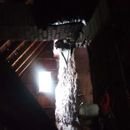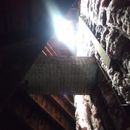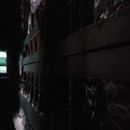1875 attic insulation/ventilation dilemma
Currently in the process of replacing our old batt faced insulation with R-30 unfaced in the floor joists. Attic specs: 4 exterior windows – not gable vents 8 box vents one solar vent no soffit vents foam insulation was sprayed around the perimeter of the attic – where soffit vents would be placed new roof (september 2019) 75% of insulation as been installed – interior of attic has not been insulated yet. We are awaiting electrical work to be completed. Of the four attic windows, 2 are glass originals and closed; 2 are covered with louver shutters and screen – until new ones are installed. It snowed at the beginning of the week and the two windows iced up on the inside, indicating that there is too much moisture in the attic. The floor still needs to be airsealed in spots. Question: How should we address not having soffit vents? Can the windows be used even though they aren’t true ‘at the top’ gable windows? If we can use them, then how? Should I have used faced insulation? Will the new insulation lose R value if I have to lift it up to replace with faced? What is the best way to air leak seal? There are places that need sealed. Other consideration: Attic has walk up steps. The door that leads to the attic has insulation on the attic side. Any thoughts, insight, and suggestions?? Critiques? Ways to get the proper ventilation? Thank you!
GBA Detail Library
A collection of one thousand construction details organized by climate and house part













Replies
Hi Bunny.
Here's a deep dive into attic venting: All About Attic Venting
Assuming that you'll not be changing your venting situation, your best bet is to do a diligent job air sealing your attic, including tricky areas like around that chimney. This will be a helpful reference: Air Sealing an Attic. Again, this is the most important thing you can do.
Where you are located matters, but again assuming that you are in a colder climate, your ceiling assembly should probably include an interior vapor retarder. Kraft faced batts may be a better option than unfaced.
Thank you! We are in the MIdwest - frigid winters; hot, humid summers. I hope I haven't ruined the insulation that I've already installed!
Even if there is some condensation or other moisture in the new batts the insulation is not ruined- it can and will dry into a vented attic as long as the attic floor/upper floor ceiling has been made AIR tight, so that it isn't constantly streaming humid air through the insulation into the attic.